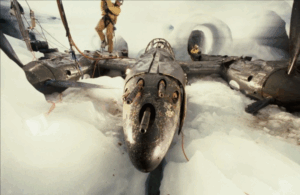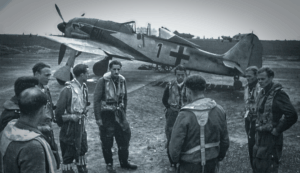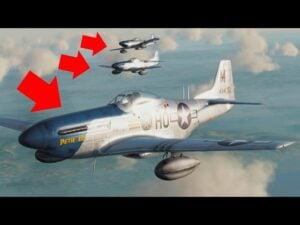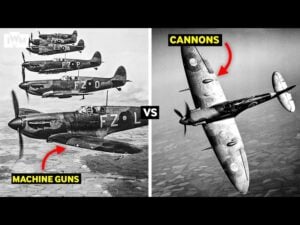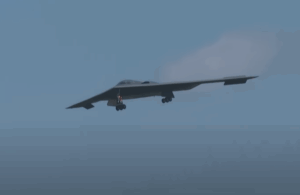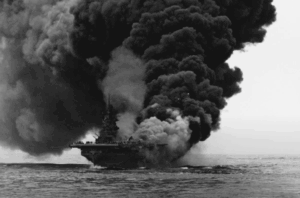Did You Know The Hidden Aces of WWII: America’s Combat Drone Against Japan?

Rex's Hangar / YouTube
In 1966, Steve G. Simpson, a canny reporter, made a startling find in the depths of the Papua New Guinea jungles near Rabaul. Years before, the island had been a focal point of the Japanese military efforts during World War II, and Simpson was fueled by tales of enigmatic aircraft—“clever planes”—that had soared and crashed there. His discovery: a mysterious wreck that bore little resemblance to any wartime planes known to have been in the region.
The Unearthing of a Forgotten Technology: Rediscovering the TDR-1
Simpson uncovered four curious items within an overgrown crater: a large, metallic bomb release system with its identifying tags still readable; a vast stretch of welded steel piping; a six-cylinder Lycoming engine, alongside parts of another; and the hub of a wooden propeller. He documented his find and sought answers from Washington, D.C. and the bomb release system’s manufacturer. The Air Force didn’t recognize the aircraft, and the manufacturer acknowledged their creation but couldn’t pinpoint its usage.
Unbeknownst to Simpson, he had stumbled on a TDR-1: an early iteration of the unmanned aerial combat vehicle, a precursor to the drones employed today. Tracing this technology back to its origins, we find Lieutenant Commander Delmer Fahrney at the helm, who, with the U.S. Naval research team, had developed radio-controlled drones as naval training devices by 1939. These unmanned crafts showcased weaknesses in Navy defenses, spurring advancements in optical fire control, proximity fuses for munitions, and the use of aerial radar—crucial assets for the U.S. during the conflict.
While Fahrney was originally tasked to focus solely on target drones, he envisioned the broader application in combat scenarios. As anti-aircraft weapons advanced, traditional aircraft became exceedingly vulnerable, especially for torpedo bombers in the Pacific Theater, which underscored the need for an alternate strategy.
By the late ’30s, efforts were in motion to create “assault drones”—uncrewed, explosives-laden aircraft geared to assault locations like a German aircraft carrier. Guidance was the principal challenge, but Fahrney was convinced that technological strides could result in unmanned crafts capable of precision strikes without sacrificing human pilots.

Advancements and Obstacles: The Development of Combat Drones
The race to develop such technology surged as tensions with Japan mounted. Various systems emerged, featuring radar, radio homing, or even television guidance, with the last promising superior accuracy. In 1941, the RCA Corporation contributed a compact TV camera and transmitter installable in unmanned crafts, allowing for remote operational ranges of roughly 30 miles. Although camera quality was modest, distinguishing significant landmarks and warships was feasible.
Trials exhibited the drones’ precise targeting capacities, yet bureaucratic hurdles over resources and priorities initially hampered the progression of this technology. Everything changed with the attack on Pearl Harbor and subsequent losses in the Pacific War. The Navy, in dire need of innovative weaponry, commanded accelerated development and production of drone aircraft through “Operation Option.”
This led to two assault drone models: the naval-designed TDN and the more simplified, commercially built interstate TDR-1. The TDR-1, in particular, was a low-wing monoplane constructed with light materials and a simplified design. Its engine was identical to the TDN, but it came with jettisonable landing gear, anticipating one-way missions. The TDR-1 carried an impressive payload and was piloted remotely through a small TV screen in a chase craft.
Production hurdles and tepid interest from planners originally capped the TDR-1’s deployment. However, once combat testing began, these drones were employed against a myriad of targets with significant success. A special group, “Stag One,” demonstrated these drones’ effectiveness by destroying stationary targets. Yet they were slow, leading to some losses from ground fire.

The Legacy and Revelation of the TDR-1 Drone
As the war progressed, with Japan’s capabilities waning and conventional aircraft proving formidable enough, the Navy ceased TDR-1 operations and repurposed the remaining drones for practice targets. Despite this, the TDR-1s achieved a substantial hit rate, a notable feat considering the era’s technology.
Perhaps most intriguing is the lingering impact of these early drones on modern warfare. While they did not immediately revolutionize military tactics, they laid the groundwork for controlled, unmanned battlecraft. Decades later, the innovations initially developed for the TDR-1 would contribute to complex modern drones like the General Atomics Predator, proving that even the early, crude designs had long-lasting influence.
It wasn’t until journalist Simpson’s hike into the jungle that the TDR-1’s story would come to light, leading to the declassification of the SAP4 program and a newfound appreciation for the trailblazing drone technology and the people behind it. Today, one of these historic crafts is preserved at the National Naval Aviation Museum in Florida, a silent witness to an era that challenged the limits of warcraft and paved the way for future innovations in aerial combat.














